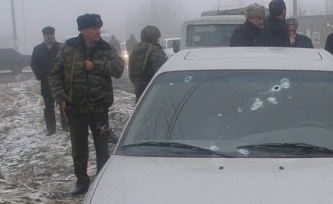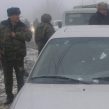
Growing Evidence Suggests Moscow Is Driver of Political Terror in North Caucasus
Publication: Eurasia Daily Monitor Volume: 11 Issue: 153
By:

On August 16, Rasul Gamzatov, the deputy mufti of North Ossetia and the imam of the Vladikavkaz mosque, was shot dead at the entrance of his apartment building. The murder, which took place shortly before midnight, was carried out by two unidentified young men who waited for the cleric and were not driving a car, according to reports. The previous imam of the Vladikavkaz mosque, Ibragim Dudarov, was killed in December 2012 and his murder remains unsolved (ITAR-TASS, August 17). On August 28, North Ossetia’s mufti, Hajimurat Gatsalov, announced that the republic’s Muslim community was prepared to pay the equivalent of up to $14,000 for information about the murders of each of his deputies. According to the Kavkazsky Uzel website, the killing of Gamzatov was the fourth killing of an Islamic cleric in the North Caucasus this year and the 40th since 2009 (Kavkazsky Uzel, August 28).
While the murder of Muslim leaders in the North Caucasus is not a new development, they are not as common in a relatively quiet place like North Ossetia. Unlike the other republics of the North Caucasus, the indigenous people of North Ossetia, the Ossetians, are primarily non-Muslim. Perhaps the minority status of Muslims in the republic contributes to its relative stability. Still, in spite of the absence of an insurgency in North Ossetia, Ossetian Muslims themselves are still being targeted.
Gatsalov rejected the idea that Gamzatov’s killing was connected either to insurgents from the outside of the republic or to business conflicts Gamzatov may have had. Instead, the mufti hinted at who may have been behind the murder in an interview with Kavkazsky Uzel: “Highly professional murders that are very well organized and carefully planned take place,” he told the website. “We now know from investigators that on that day three cars followed Rasul Gamzatov’s car. I also spent some time in his car. The cars were registered by various CCTVs and on his own car video recorder. But who could have such resources—to follow, observe, find professionals and kill?” (Kavkazsky Uzel, August 24).
Gatsalov’s comments suggest the only force that could have carried out an attack against the deputy mufti of North Ossetia was a government agency. The fact that the murder of Ibragim Dudarov, the previous deputy mufti, has not been solved in the past two years tentatively points in the same direction. If the government was not involved in Dudarov’s murder, it would have likely “solved” the crime by accusing random militants as it does elsewhere in the North Caucasus. However, this is hard to do in North Ossetia, where there is no insurgency, so the crime has simply remained “unsolved.”
The well-known Russian pro-Kremlin analyst who focuses on the North Caucasus, Maksim Shevchenko, commented on the killing of Rasul Gamzatov for the IslamNews website: “I think that death squads really exist in the North Caucasus. I do not know who creates them and who controls them. Their aim is to physically eliminate intellectuals and people who could become the leaders of social consolidation of Muslims and the intelligentsia.” Shevchenko then went on to suggest that in North Ossetia some forces connected to “illegal alcohol production, drug trafficking, money laundering, budget money embezzlement, and unscrupulous representatives of law enforcement agencies” were behind these attacks (islamnews.ru, August 19).
While Shevchenko brilliantly described the motive behind these killings not only in North Ossetia, but across the North Caucasus, as an ostensibly pro-Kremlin analyst and activist, he could not pin the blame on Moscow. Nevertheless, all signs suggest that Moscow likely is behind this elimination strategy, which aims to kill off any leaders who are not under its control and have the capacity to become politically and socially salient.
Against the backdrop of these killings, a delegation of Crimean Tatars visited all the republics of the North Caucasus and Stavropol region on August 15–21. The state of Muslims in the North Caucasus was a major focus of the visit of the Crimean Tatars, who were trying to better understand the country in which they would now have to live (altairfund.com, August 21). The head of the Crimean Tatars’ delegation, Sherif Osmanov, said that in Crimea they did not have “the notions of terrorism and extremism,” but recent police searches of Muslims’ premises on the peninsula have started to change the climate there, as well. Some Islamic literature that is now considered extremist under Russian law had to be thrown away, Osmanov complained. The leader of the delegation also recollected his meeting with Gamzatov, who was killed the very next day (Kavkazsky Uzel, August 26).
Even Shevchenko, a pro-Kremlin analyst, recognizes that death squads are a reality in the North Caucasus. He does not want to recognize that the Kremlin is ultimately behind them—instead, he blames corrupt regional elites. However, the brutal policy of eliminating any influential leaders who are not under Moscow’s control is remarkably universal across all republics of the North Caucasus, regardless of the situation in each of them. This clearly points to a unified set of policies of political terror that the Russian government instills in the North Caucasus and is about to come into full swing within the newly-annexed territory of Crimea.




